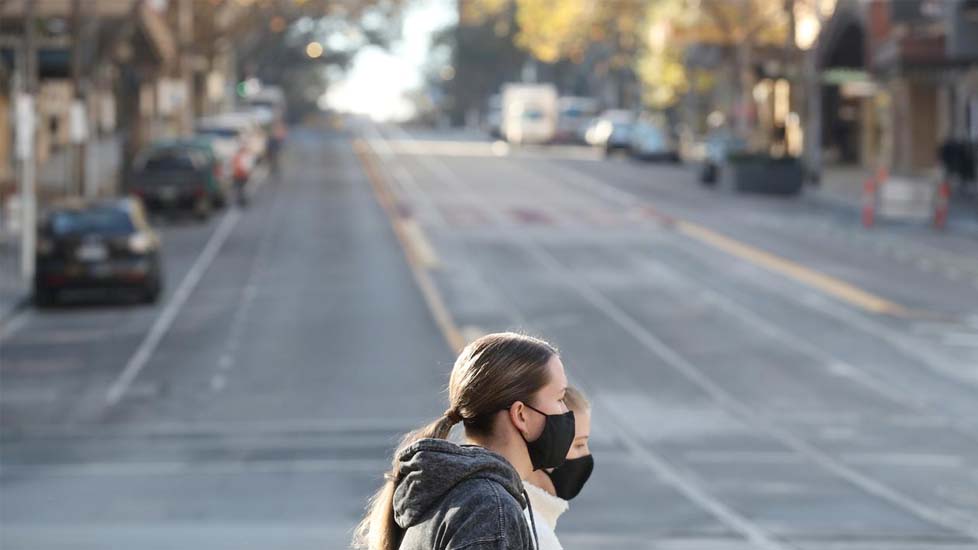Victoria has entered a five-day lockdown to control its growing outbreak of the more infectious Delta variant.
Until midnight on Tuesday restrictions mean residents are only allowed to leave home for essential reasons, can only travel five kilometres away from home, and need to wear masks outside the home, among other measures.
We consider the lockdown essential and we strongly support this rapid action. However our modelling predicts a five-day lockdown may not be enough.
Instead we predict at least 30 days of restrictions will be needed before Victoria reaches three days without community transmission.
That’s if we take into account current and predicted case numbers, the fact we’re dealing with the more infectious Delta variant, and with current levels of vaccination.
The good news is Victoria is more likely to reach these three “donut days” sooner if vaccination rates pick up, even modestly.
How did we come up with these figures?
We built a mathematical model based on nine COVID-19 outbreaks across four Australian states (including Victoria) since the start of the pandemic. We posted details online as a pre-print. So our model has yet to be independently verified (peer reviewed).
Our model allows us to predict — given current case numbers, the particular variant in circulation and vaccination rates, among other variables — how long public health restrictions such as lockdowns need to last to achieve particular outcomes. Our model also allows us to predict how many cases an outbreak has at its peak.
Models are mathematical tools to predict the future, something of course no-one can do with 100% certainty.
However, our model differs from others because it considers the difference between mystery cases and cases linked to a known case.
It also comprehensively integrates the effects of various public health measures, such as social distancing, wearing masks, contact tracing and vaccination.
What did we find about Victoria?
When we plug data about Victoria’s current outbreak into our model, this is what we find.
Our model predicts the number of daily reported cases of community transmission will continue to climb over the next week or so. Even with the current lockdown we predict a peak of at least 30 cases a day over the next 7-14 days.
We predict the current outbreak will last for at least 30-45 days before Victoria can return to three days of zero community transmission.
Measured easing of restrictions can occur before this time, which Victorian Premier Daniel Andrews flagged might be possible for regional Victoria.
However, given the fact Delta is more transmissible than the original Wuhan version of the virus, controlling Victoria’s outbreak will inevitably be more difficult and take longer than dealing with an earlier outbreak of similar size.
New South Wales knows too well how hard it is to get a Delta outbreak under control, something our model predicted.
Back to Victoria, our model supports a hard lockdown that minimises the chance of ongoing transmission.
Strict lockdown (80% reduction in social activities) and mandatory mask use in public spaces and workplaces (90% coverage) — equivalent to what’s expected in Victoria’s current lockdown — have been effective in previous outbreaks in Victoria and other states.
However, we predict the same approaches may only have a 50:50 chance to contain the current Delta outbreak in Victoria.
This means the Delta variant is likely to linger, bouncing at a level of a dozen cases for weeks. This means public health authorities will find it hard to decide how and when to lift restrictions.
Please give me good news
In our favour is at least 25% of Victorians have received at least one dose of a COVID vaccine.
Our model suggests even modest rises in the vaccination coverage in Victoria, by an additional 5% for example, would dramatically increase the chance of controlling the outbreak from 50% to over 80%. If an extra 10% were vaccinated the chance of controlling the outbreak is 94%.
This is because evidence is mounting vaccinated people are less likely to transmit the virus to others. That’s in addition to the vaccines’ well known benefits in reducing your chance of severe disease.
So getting as many Victorians vaccinated as quickly as possible is critical.
What do we make of all this?
Our study conveys a simple message. The battle against the Delta variant in the latest outbreak in Victoria will likely be tough but going early has given us the best chance.
This lockdown will not be as effective as earlier ones in Victoria and coming out of this will need to be carefully managed.
So keeping to the health advice, and vaccinating more Victorians as soon as possible even over the next few weeks, are key to handling this outbreak.
soource: The conversation












